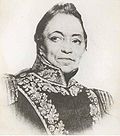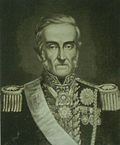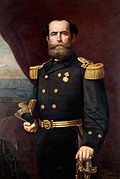| Commander-in-chief of the Chilean Navy | |
|---|---|
 Coat of arms of the Chilean Navy | |
| Reports to | Chief of the Joint Chiefs of Defence |
| Seat | Valparaíso |
| Appointer | President of Chile |
| Term length | 4 years |
| Formation | 1817 |
| First holder | Rudecindo Alvarado |
This article lists the commanders-in-chief of the Chilean Navy. The Chilean Navy (Spanish : Armada de Chile) is the naval force of Chile. The Chilean Navy dates back to 1817.
Contents
- List
- Valparaíso governor (1812–1818)
- Navy General Commander (1818–1897)
- Navy General Director (1897–1927)
- Navy Inspector General (1927–1932)
- Navy General Director (1932–1938)
- Navy Commander-in-chief (1938–present)
- See also
- References
The current Commander-in-Chief is Admiral Juan Andrés de la Maza Larrain. He was appointed by former President Sebastian Piñera on 18 June 2021. [1]



































